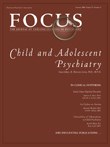Understanding the Agreements and Controversies Surrounding Childhood Psychopharmacology
Abstract
The number of children in the US taking prescription drugs for emotional and behavioral disturbances is growing dramatically. This growth in the use of psychotropic drugs in pediatric populations has given rise to multiple controversies, ranging from concerns over off-label use and long-term safety to debates about the societal value and cultural meaning of pharmacological treatment of childhood behavioral and emotional disorders. This commentary summarizes the authors' eight main findings from the first of five workshops that seek to understand and produce descriptions of these controversies. The workshop series is convened by The Hastings Center, a bioethics research institute located in Garrison, New York, U.S.A.
(Reprinted with permission from Child and Adolescent Psychiatry and Mental Health 2008; 2:5)



